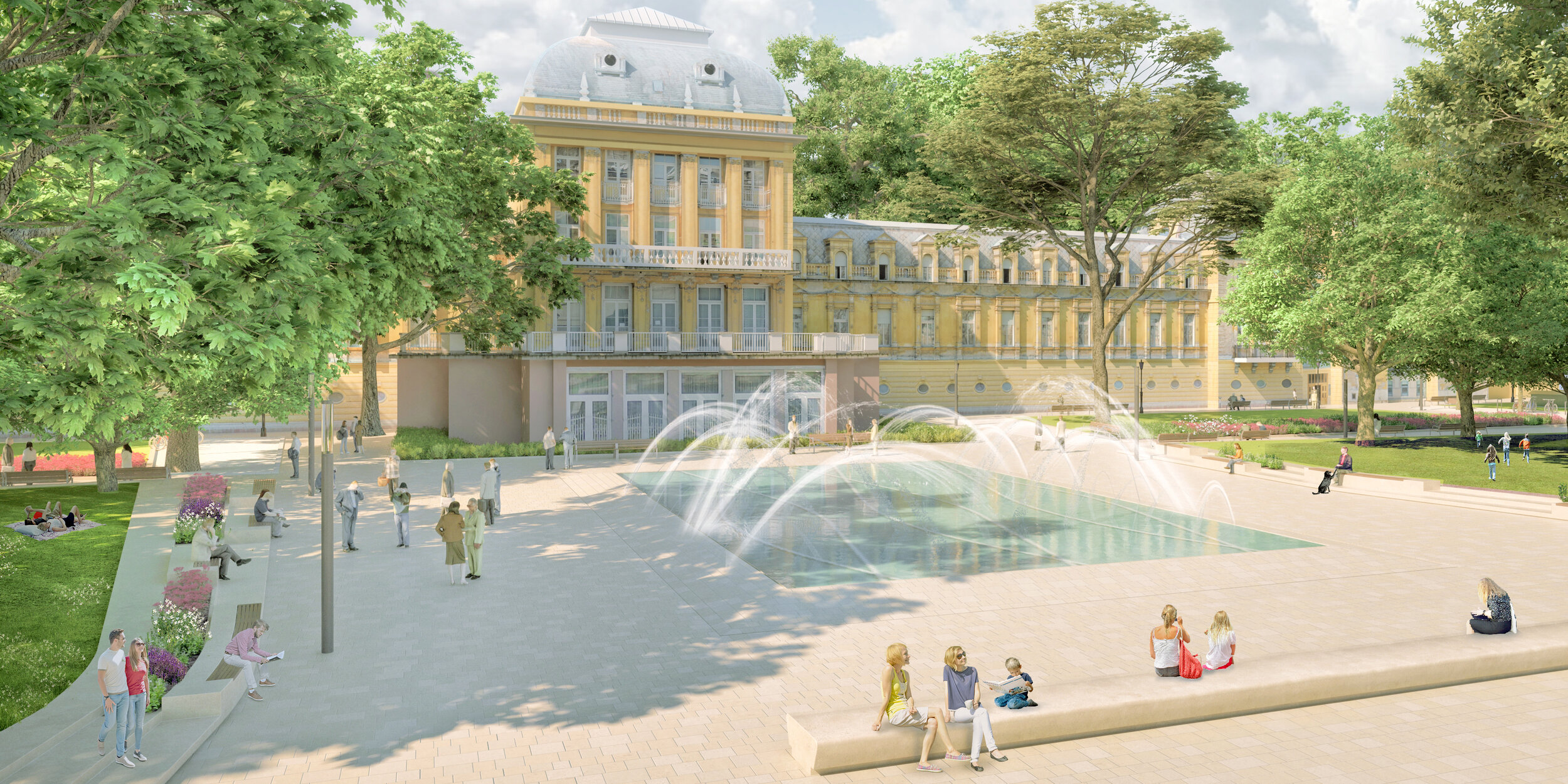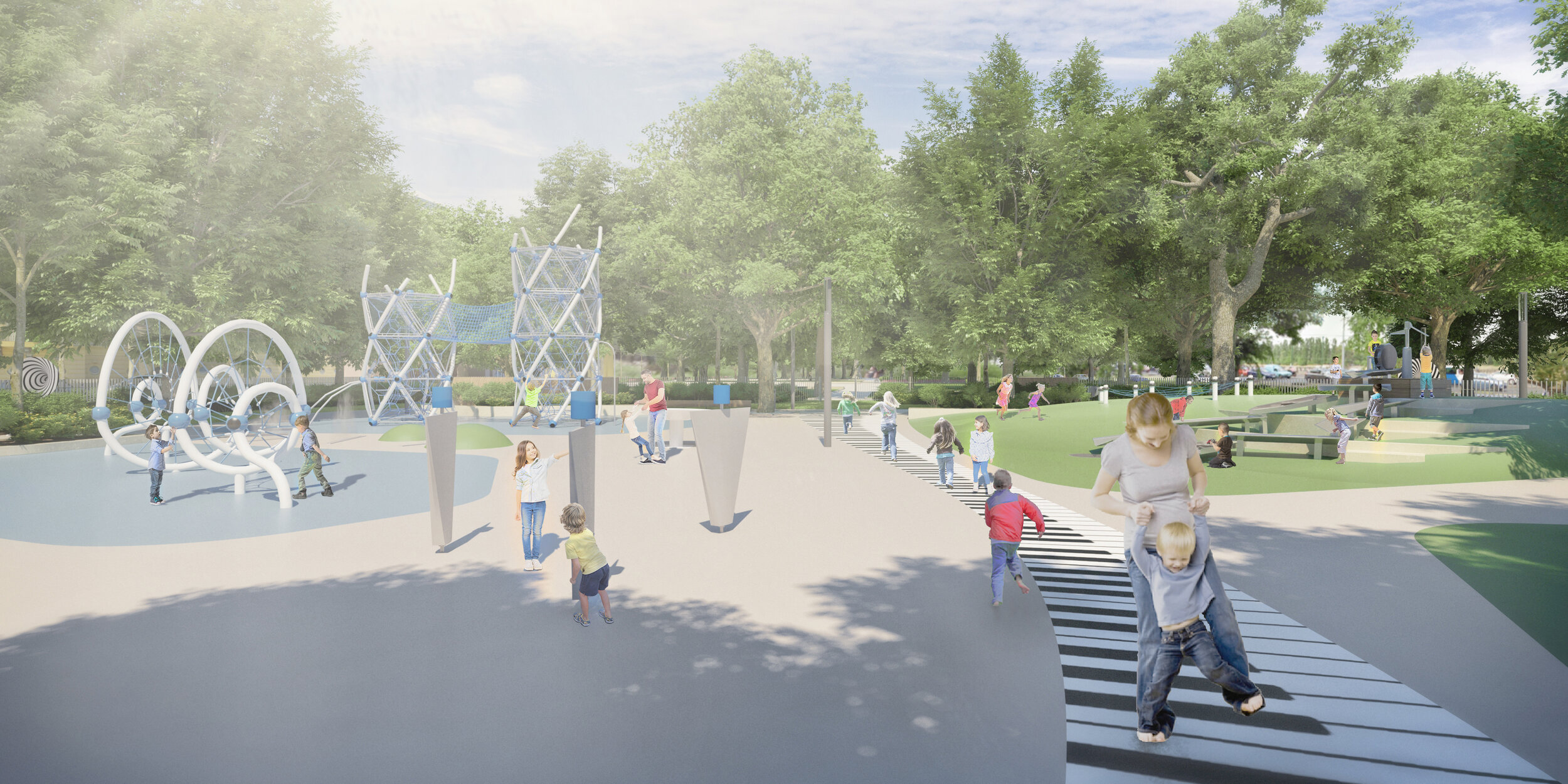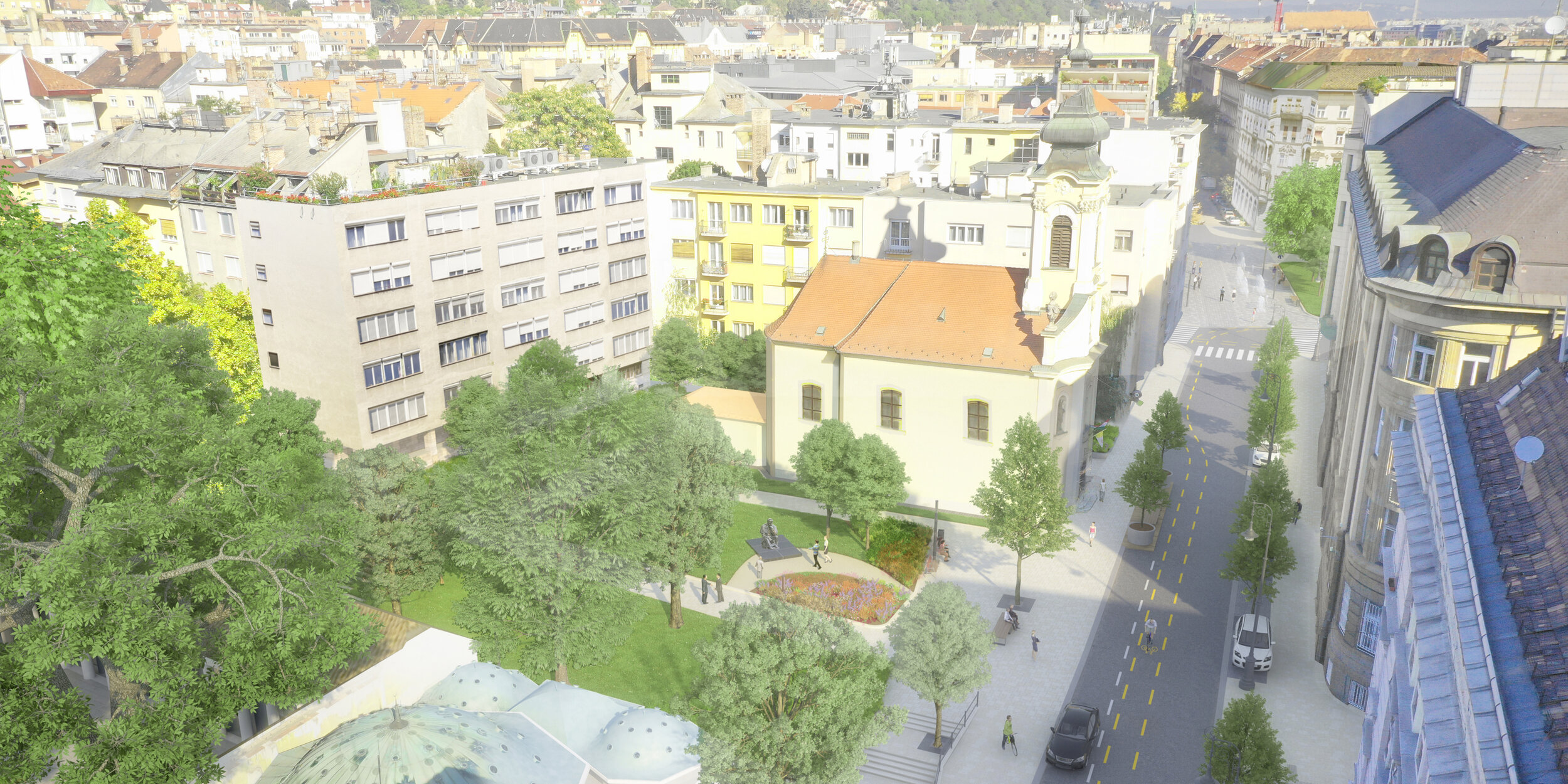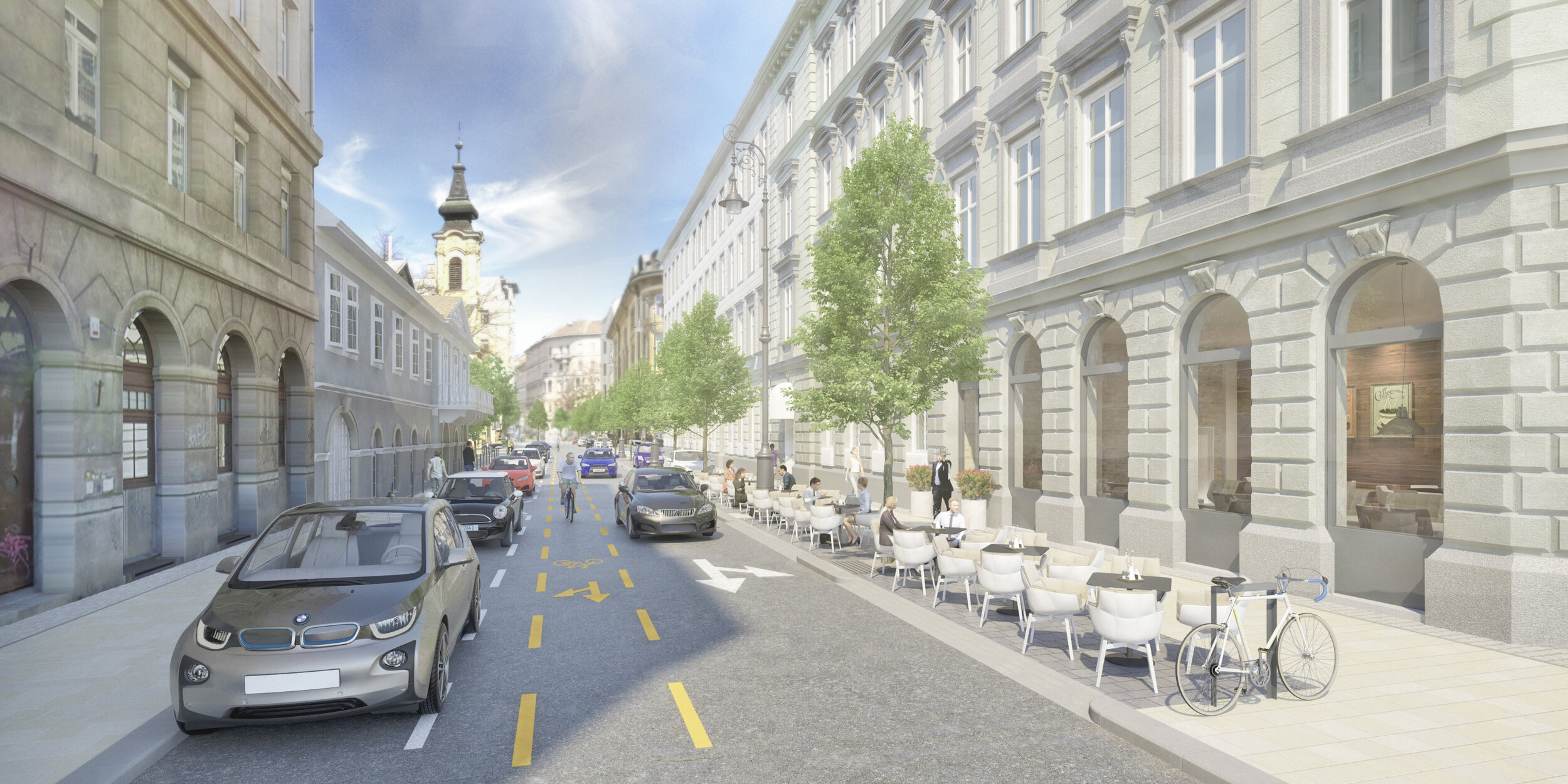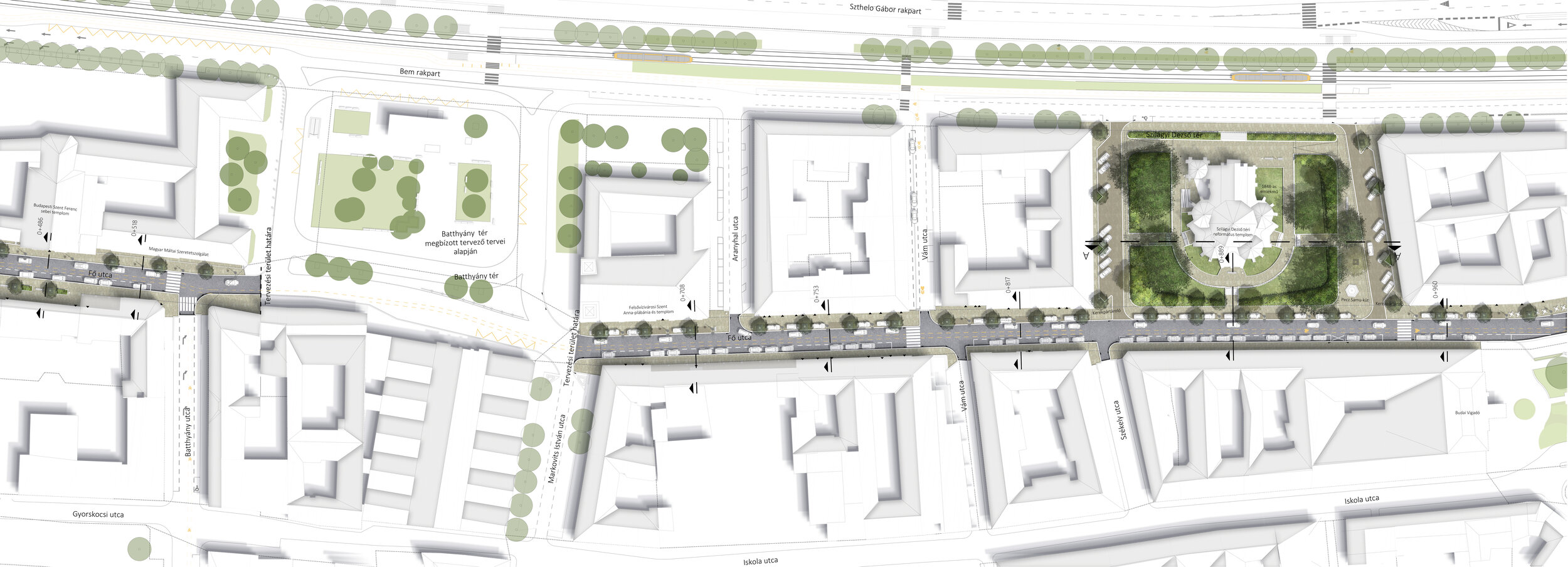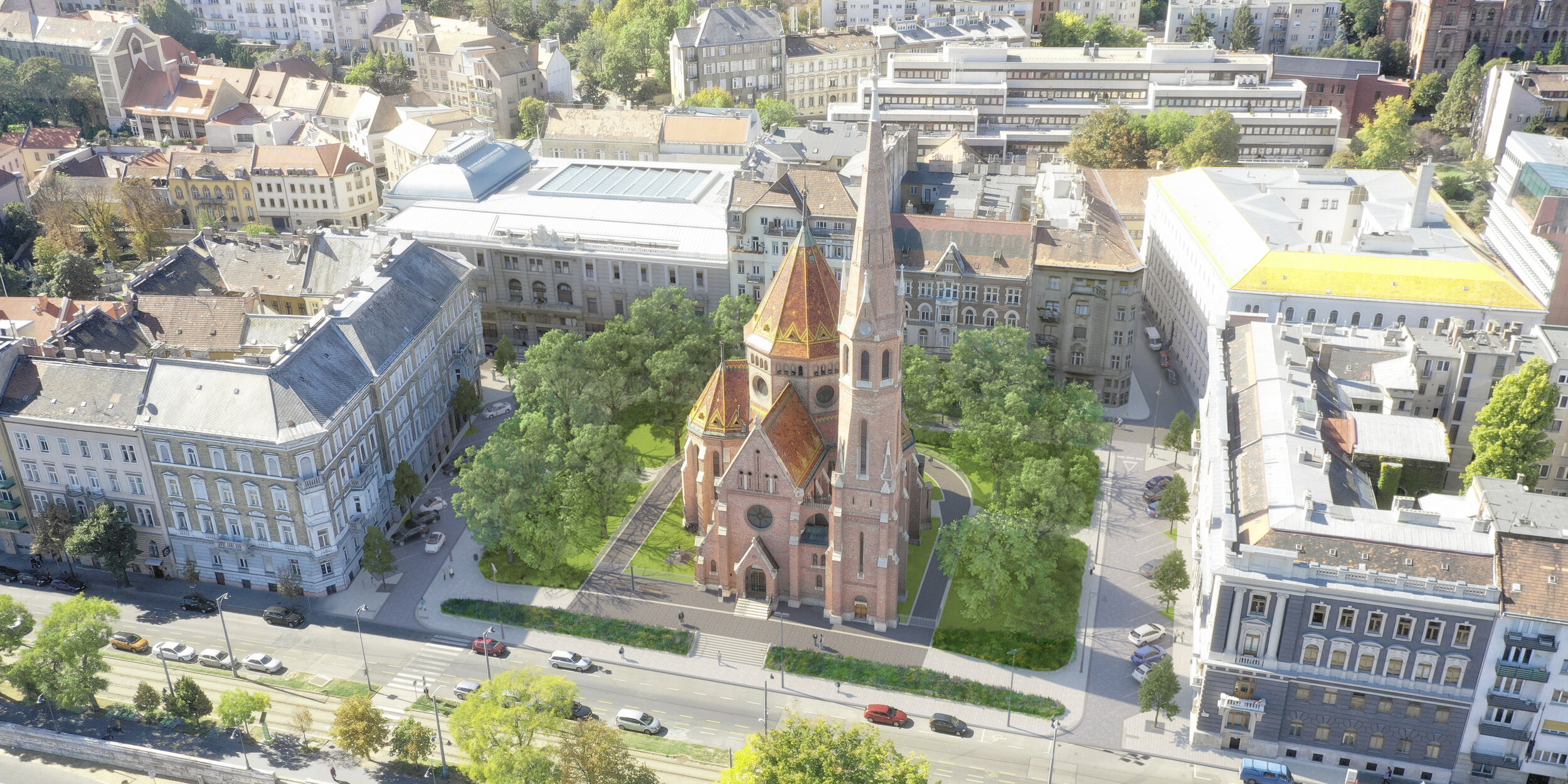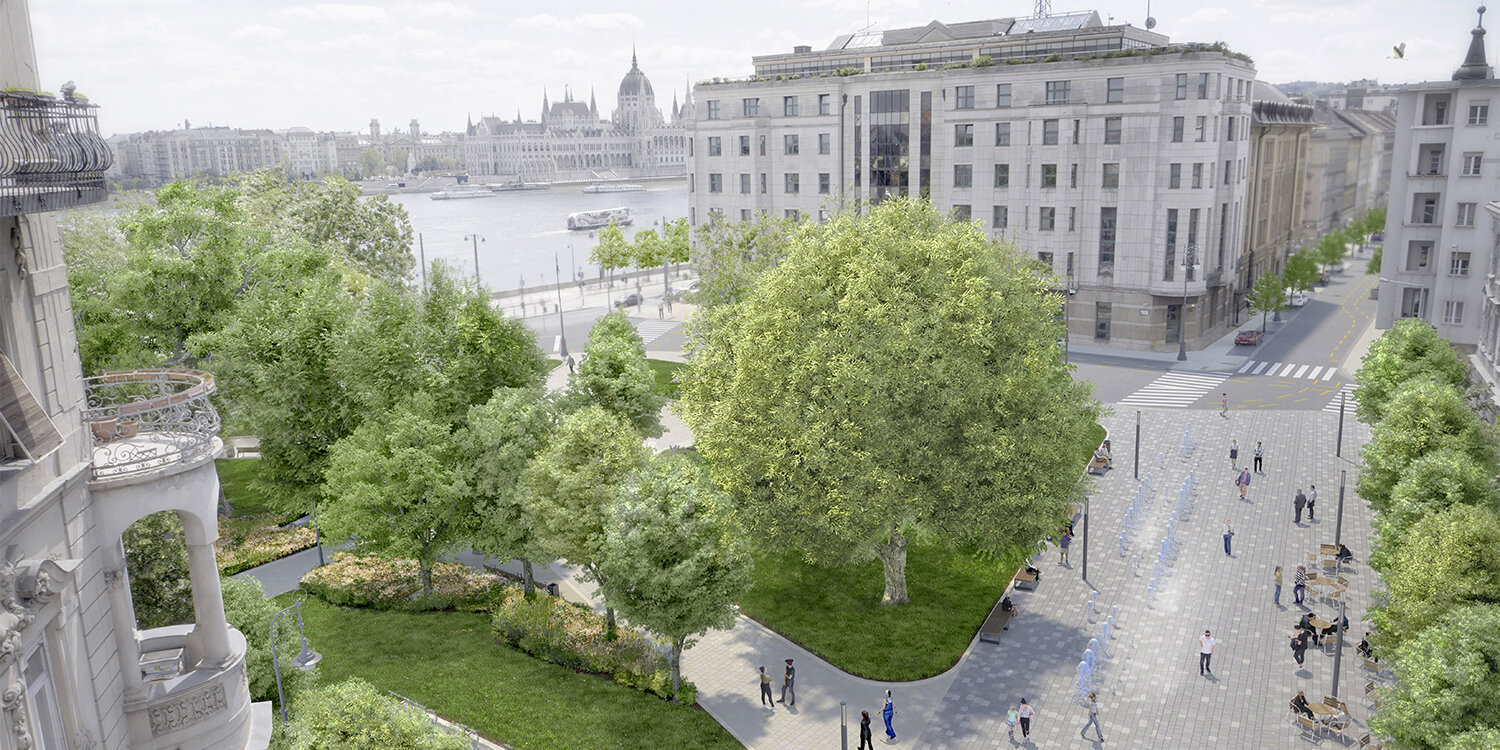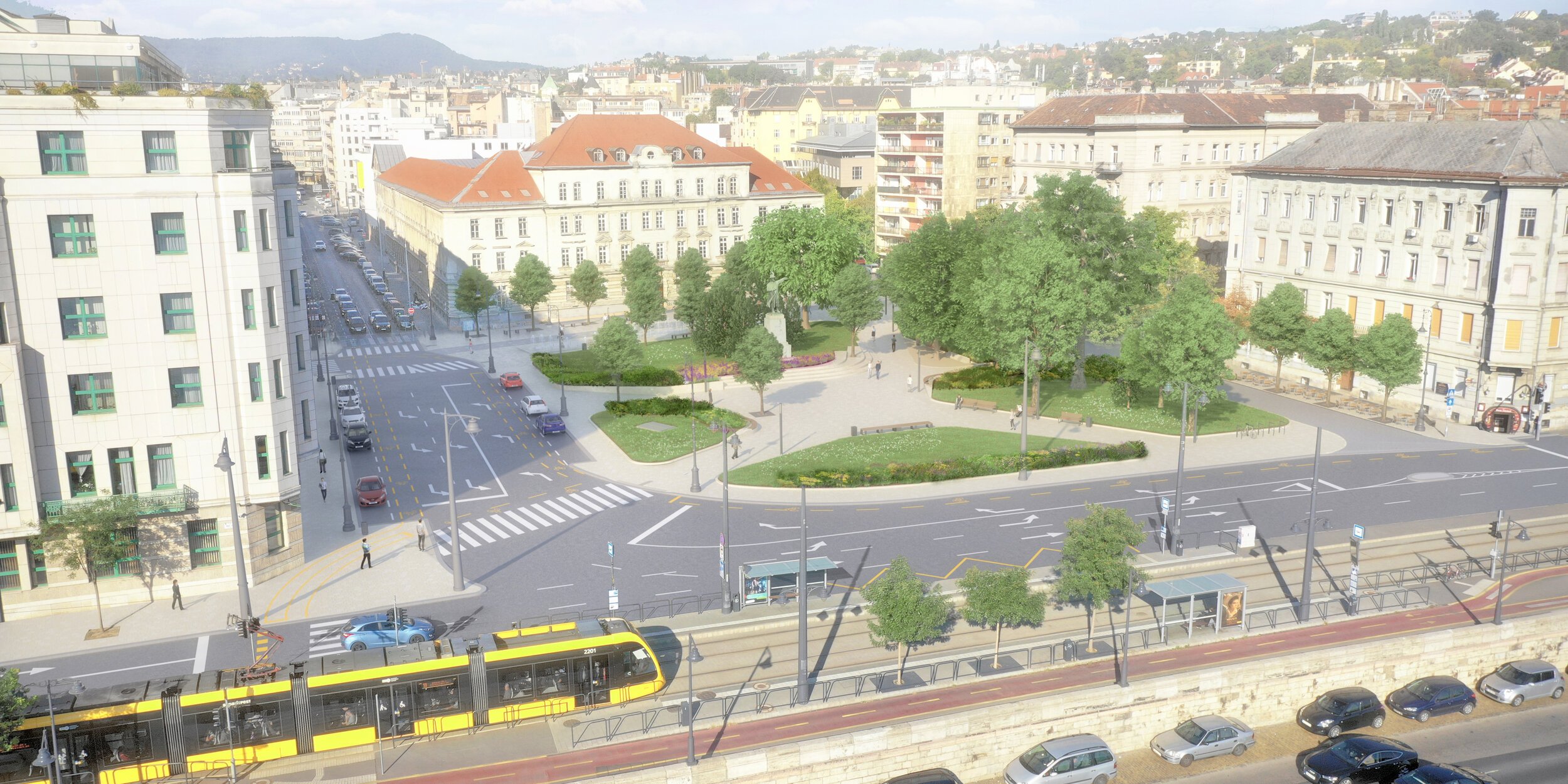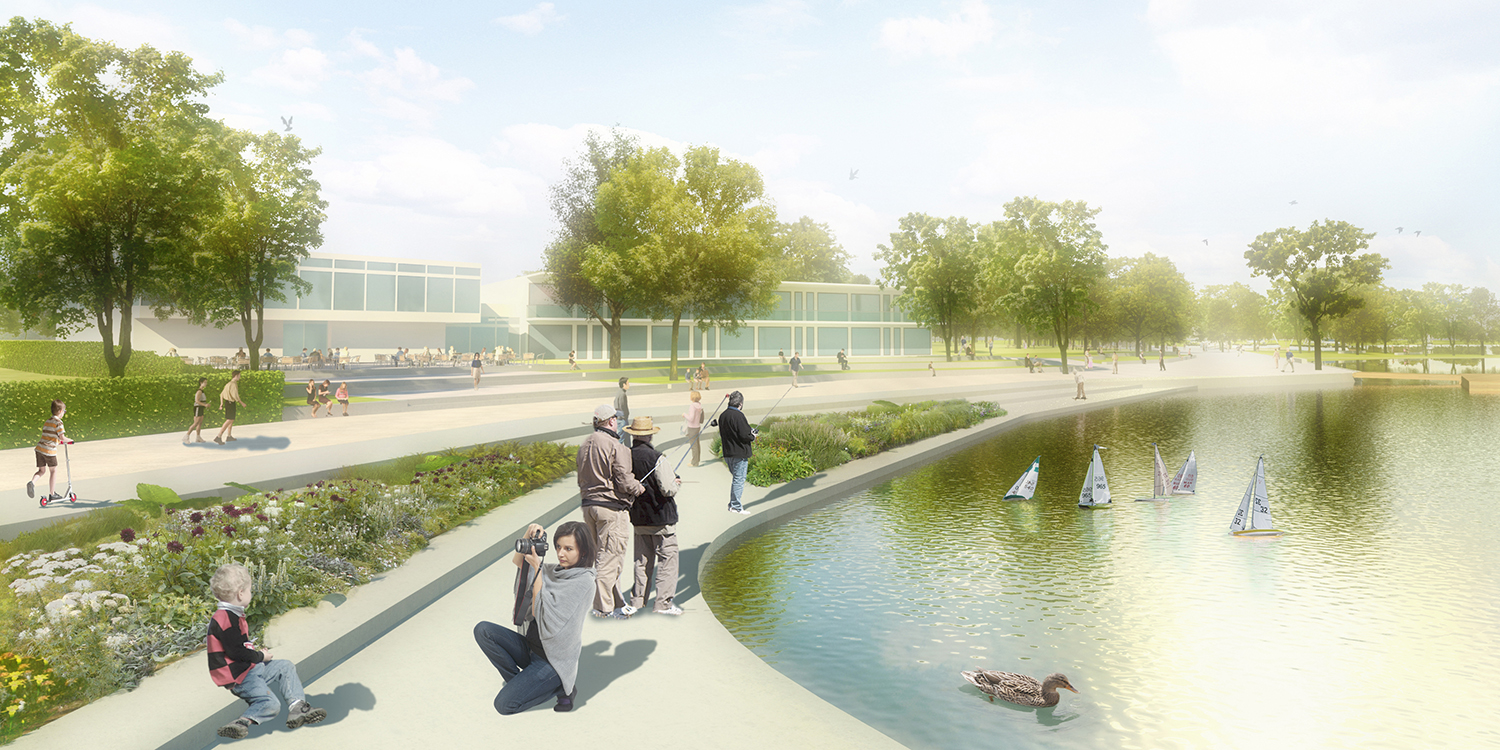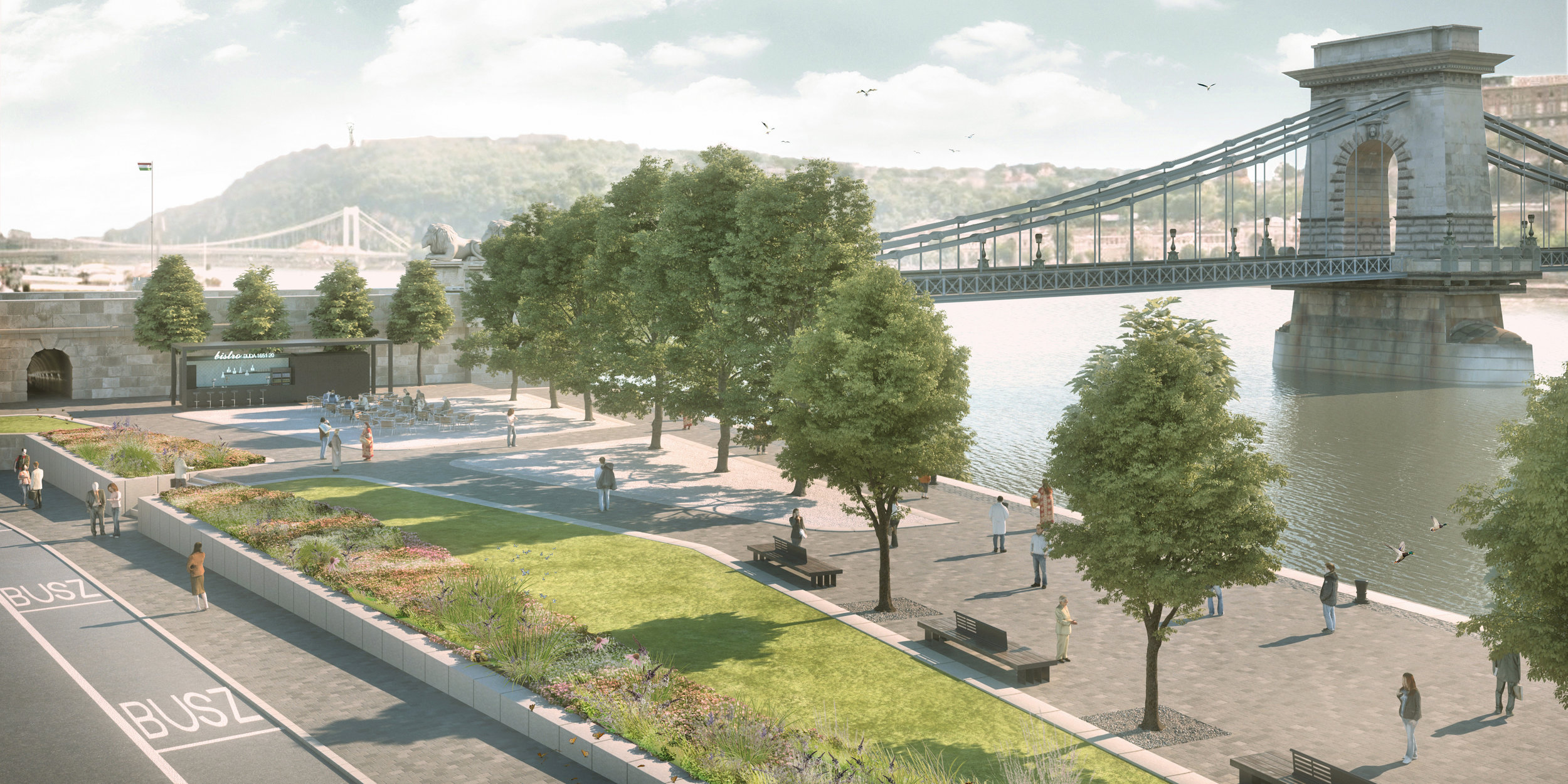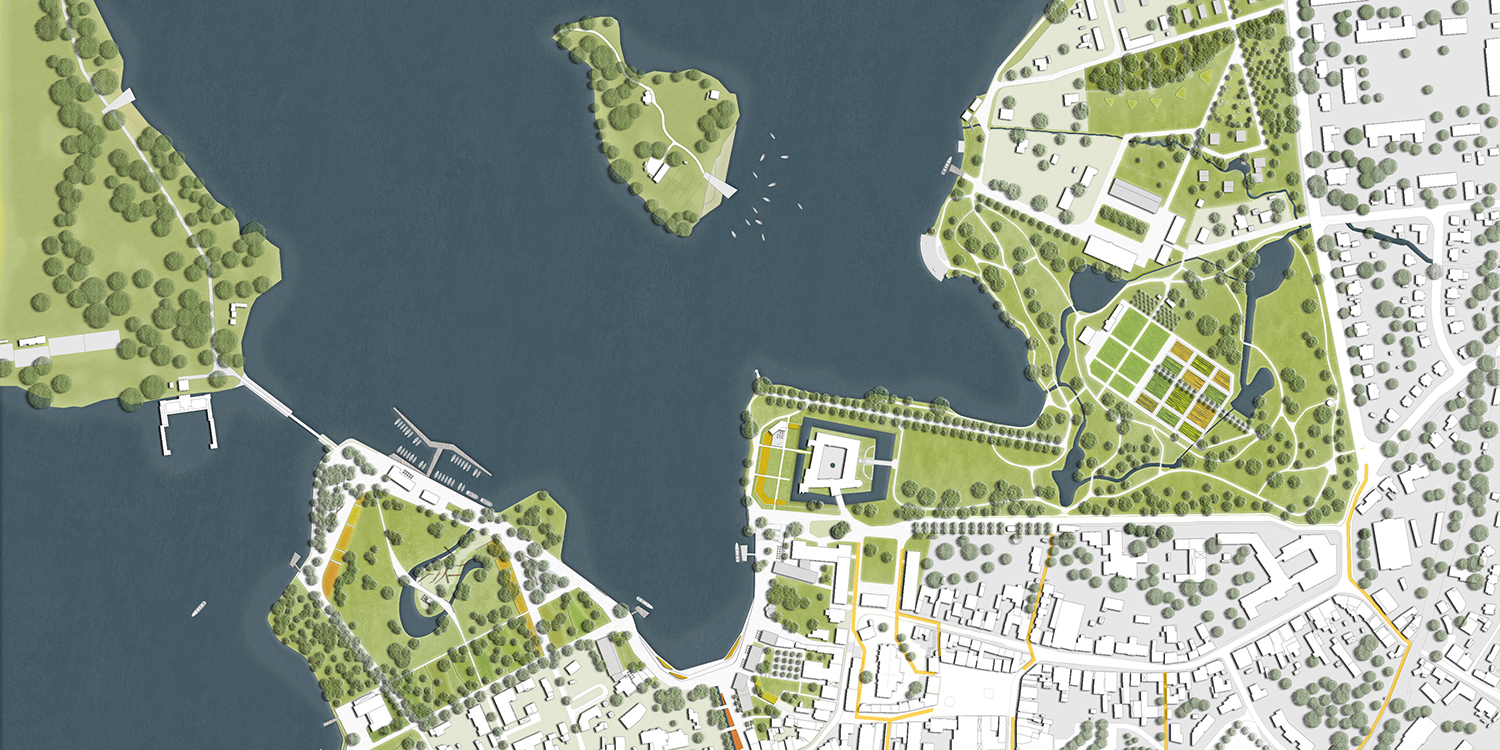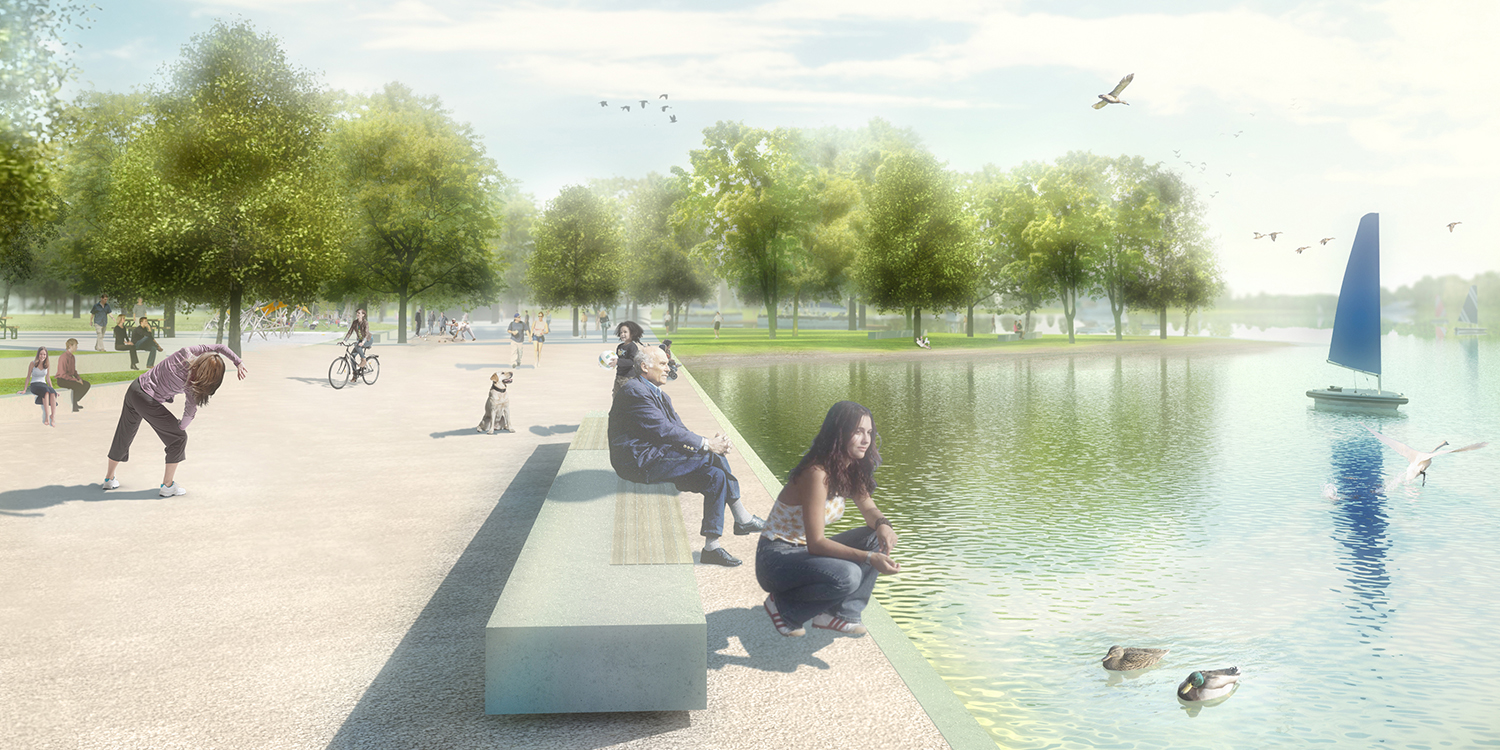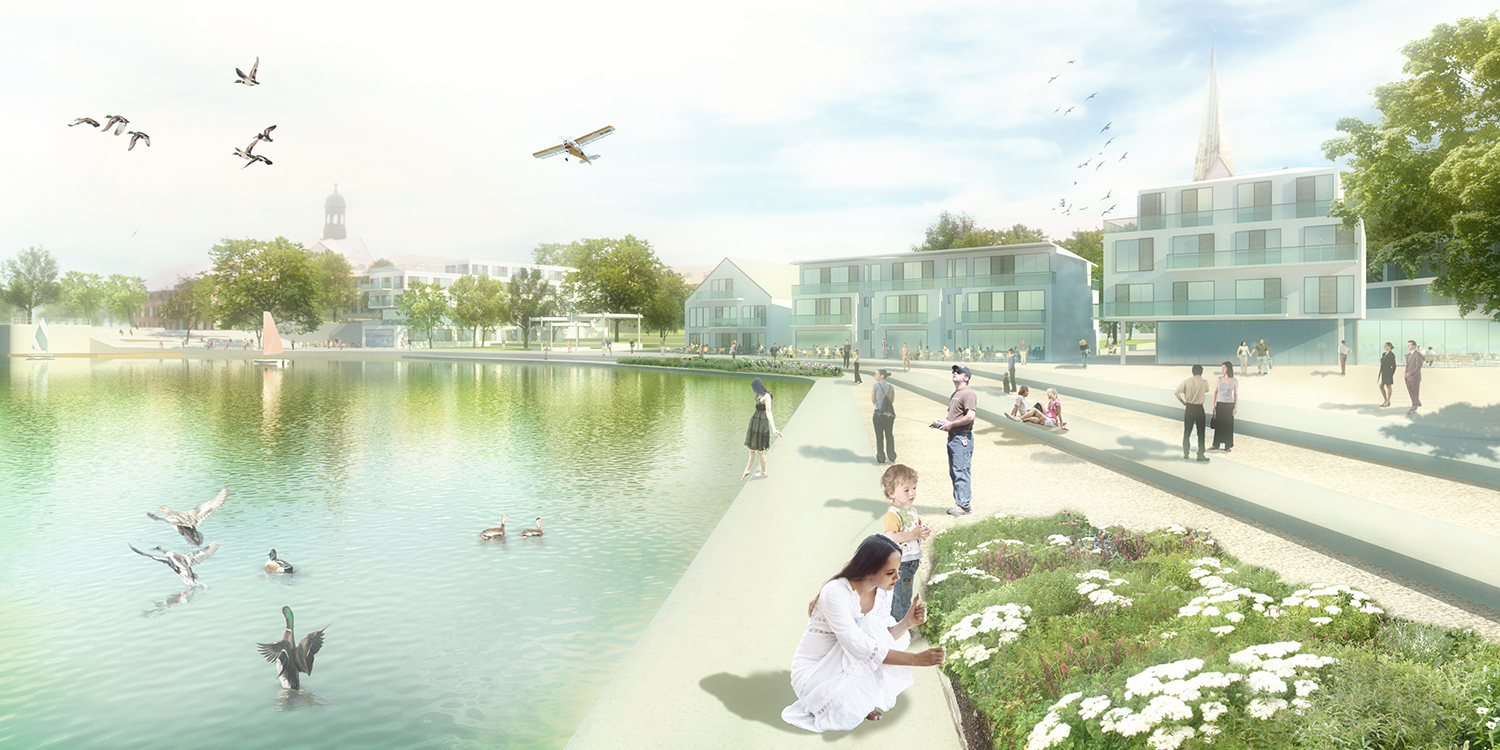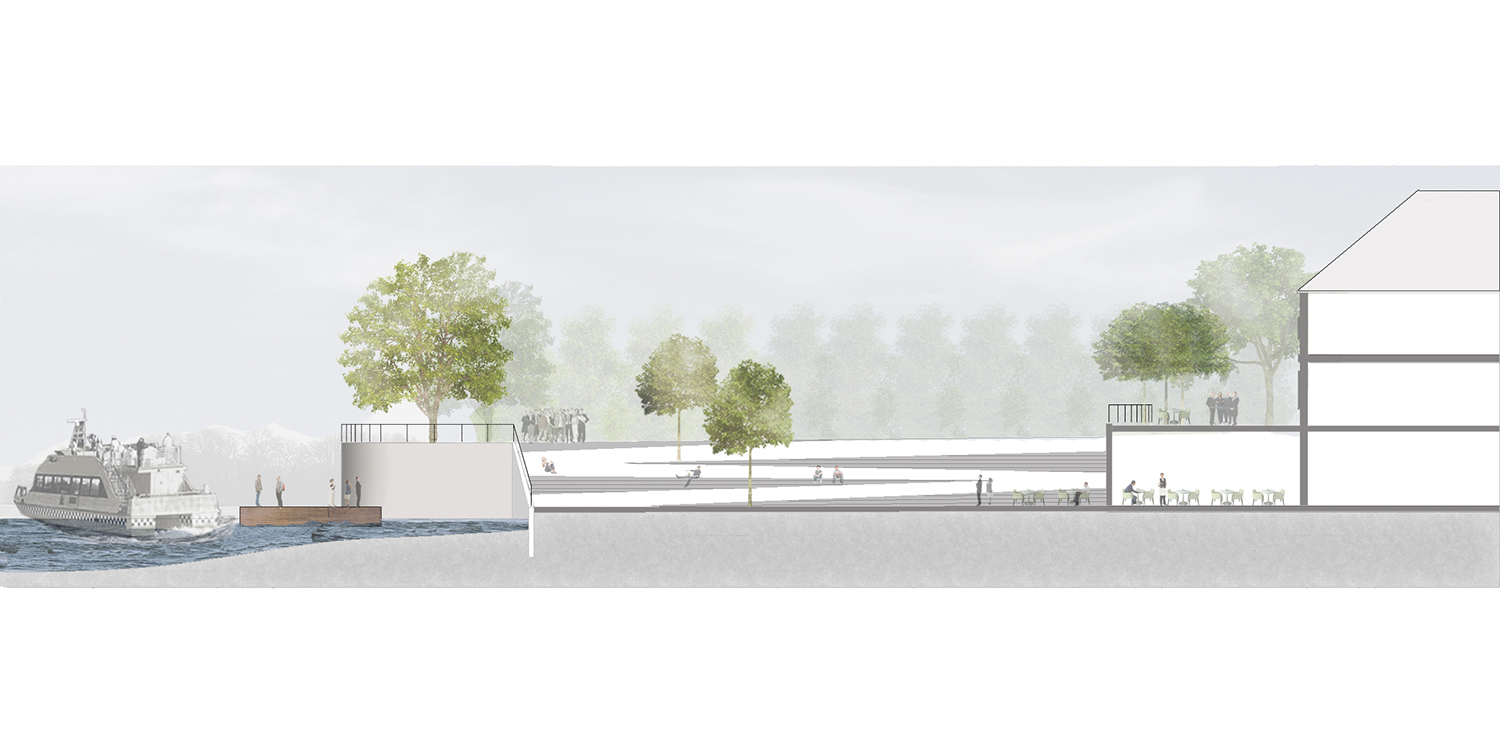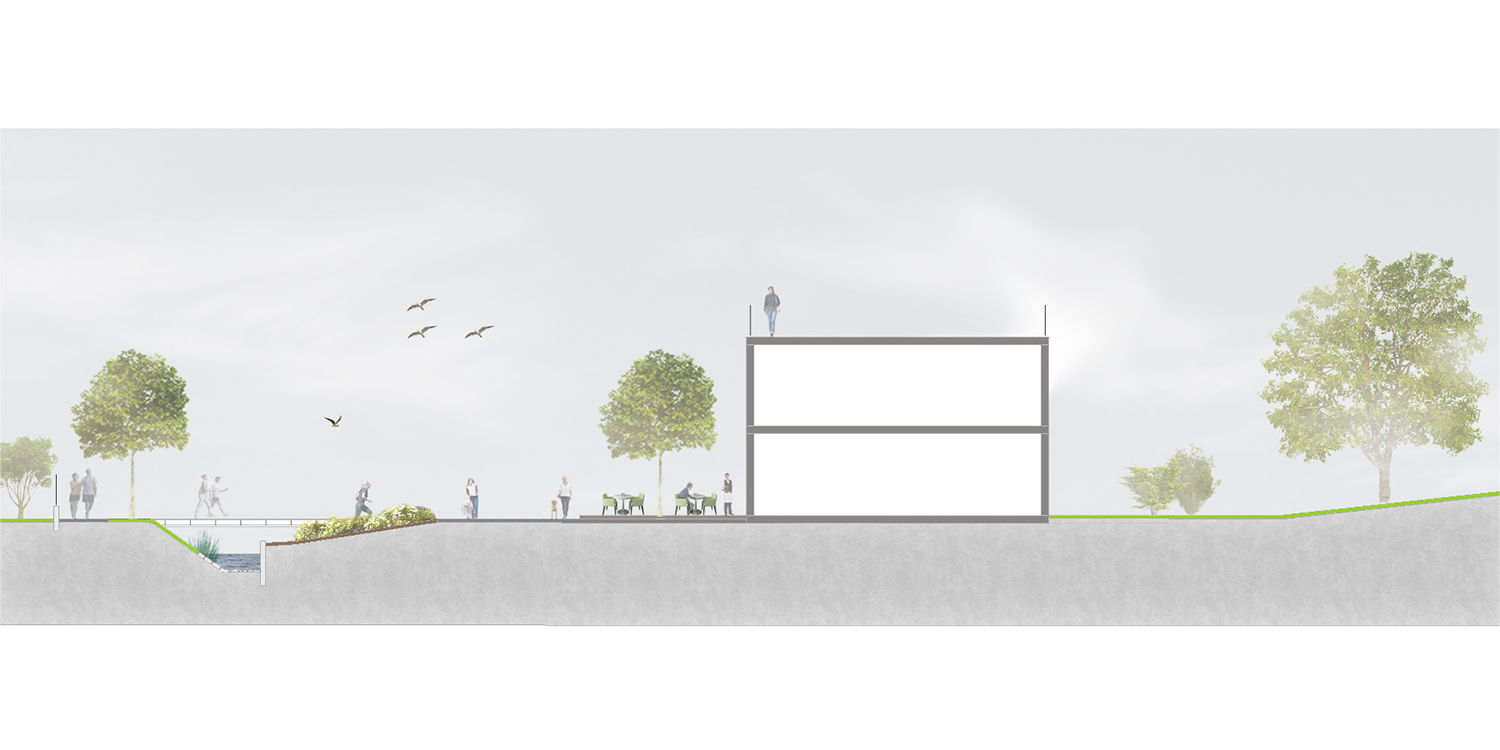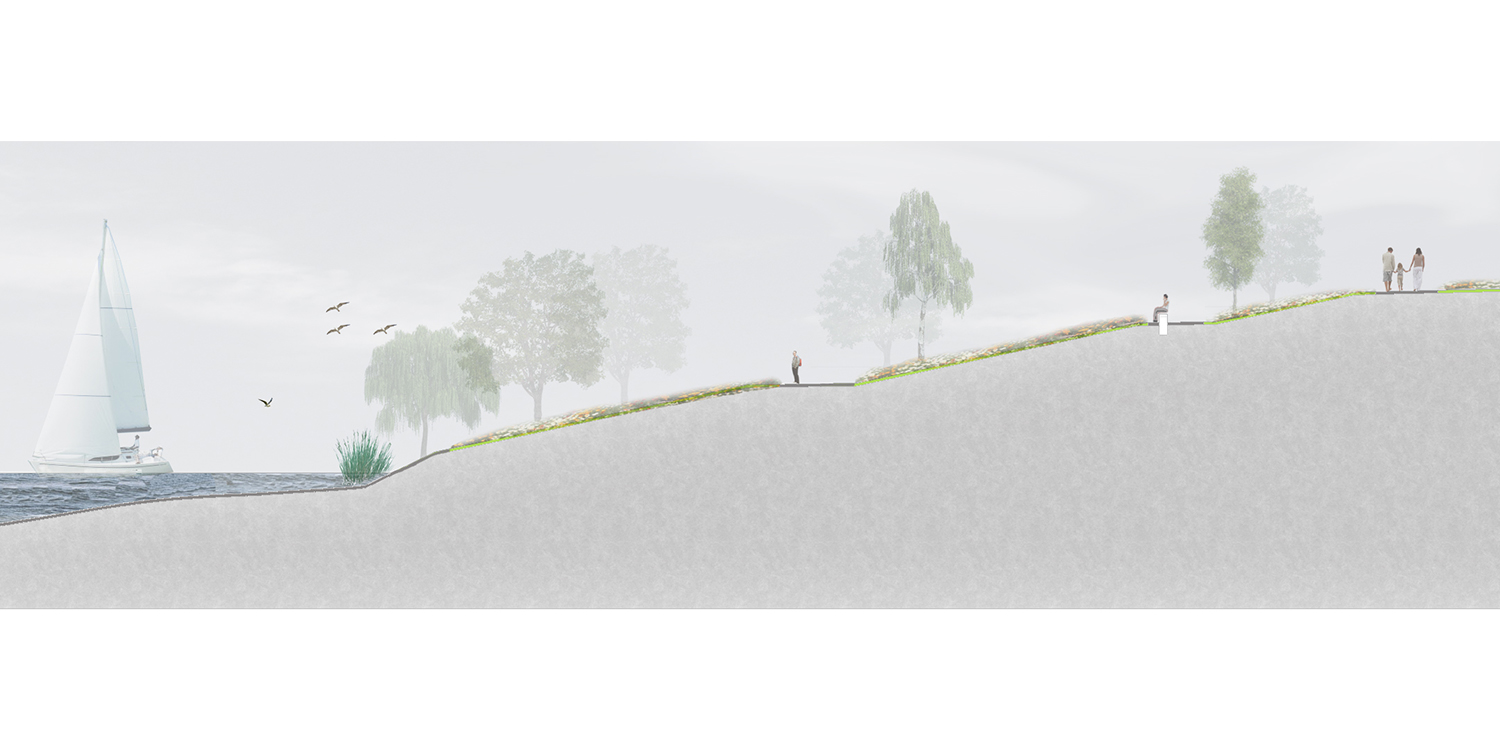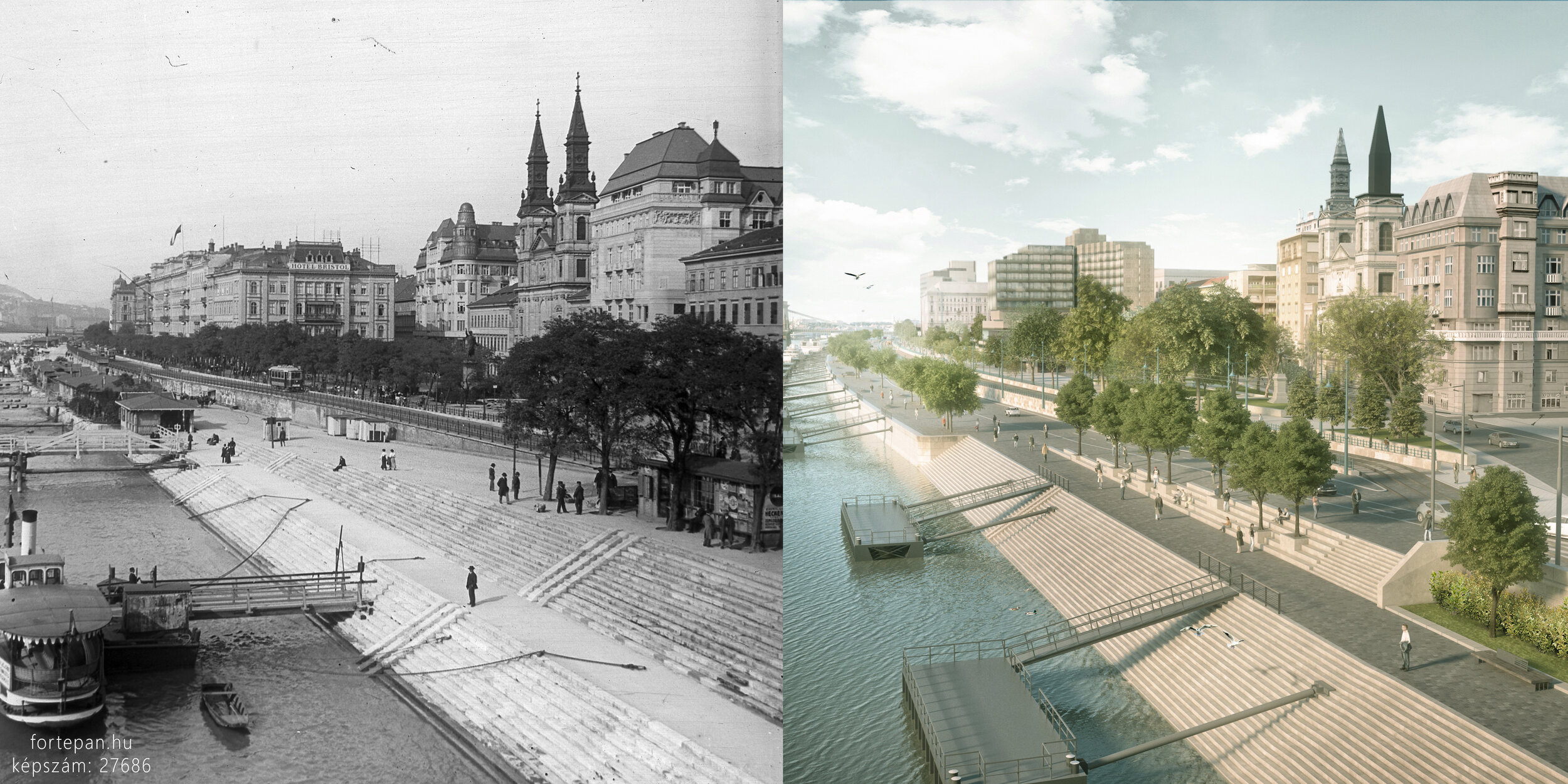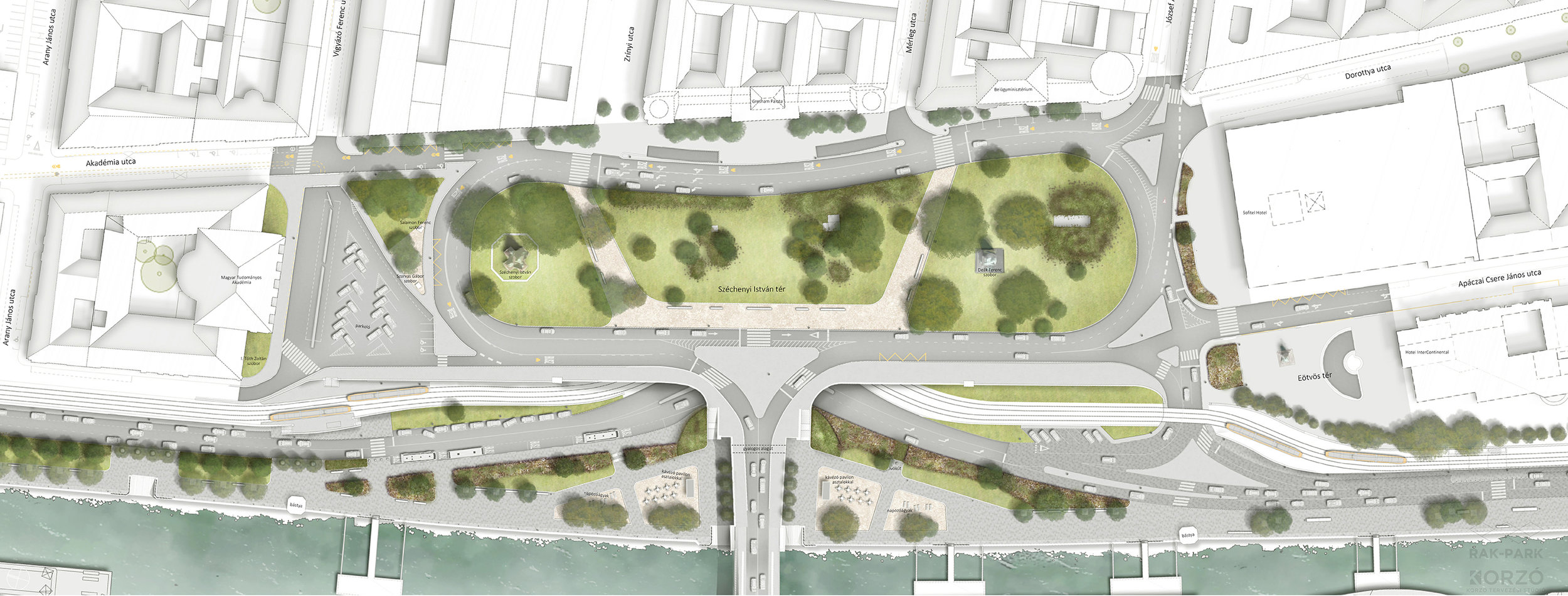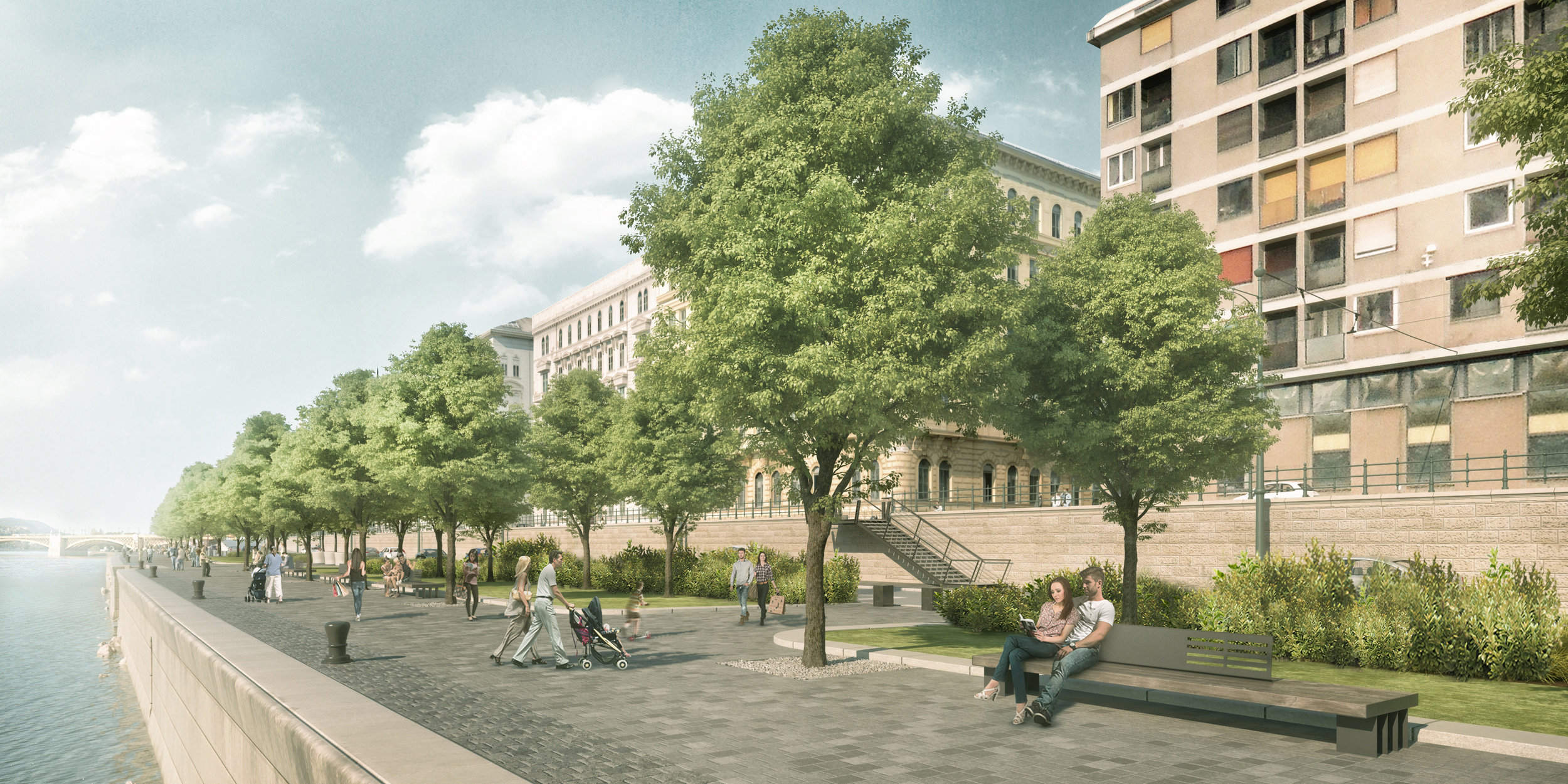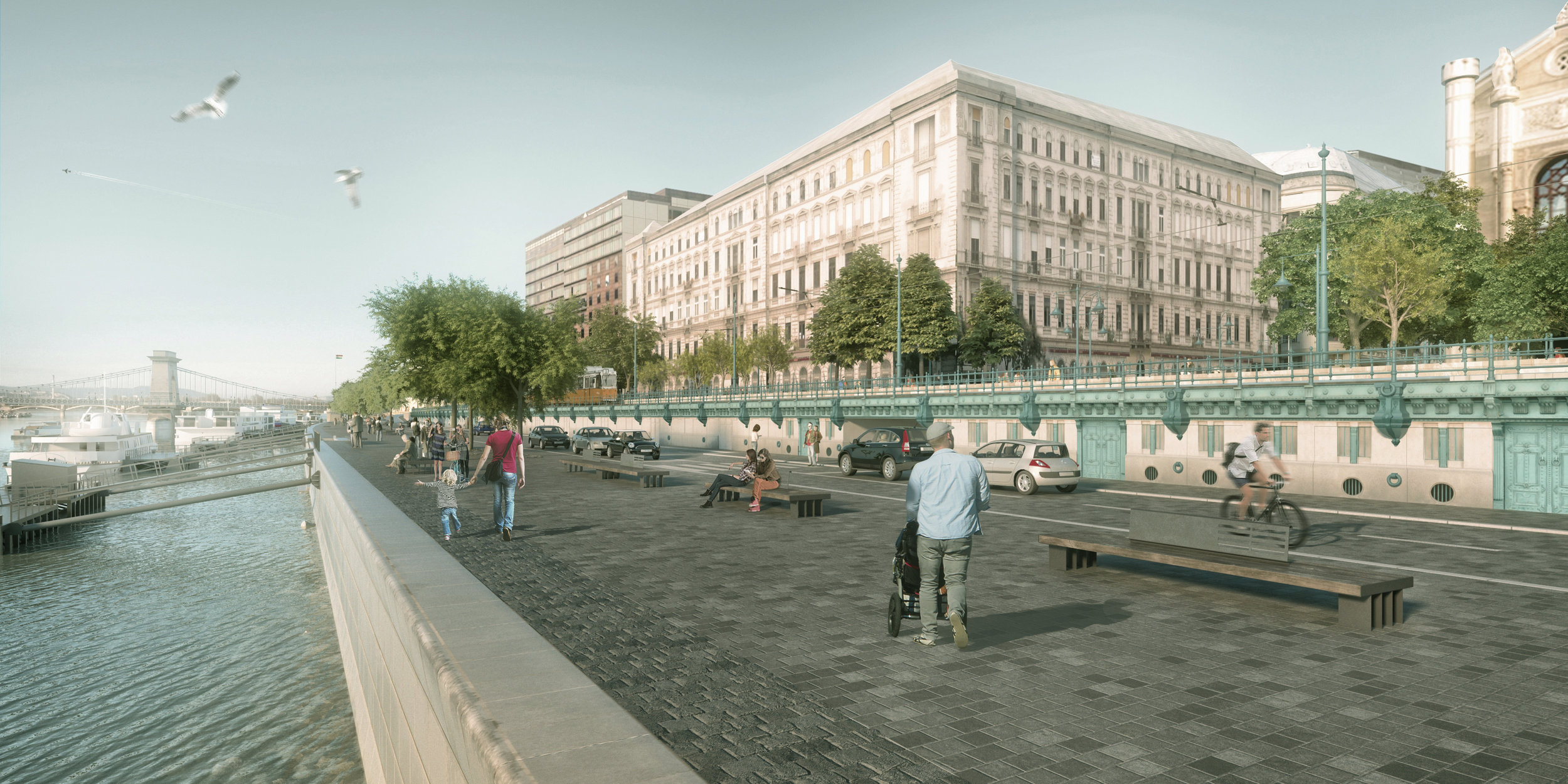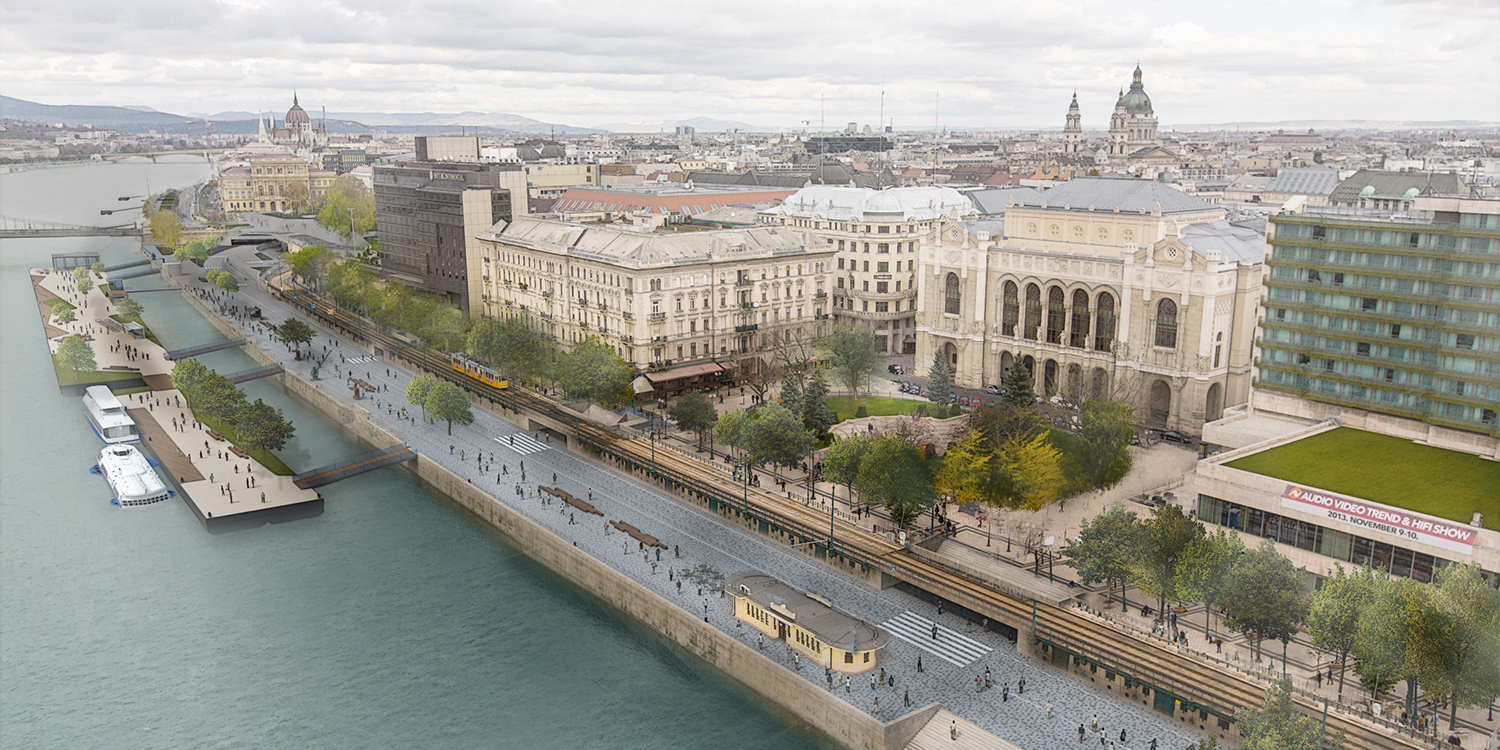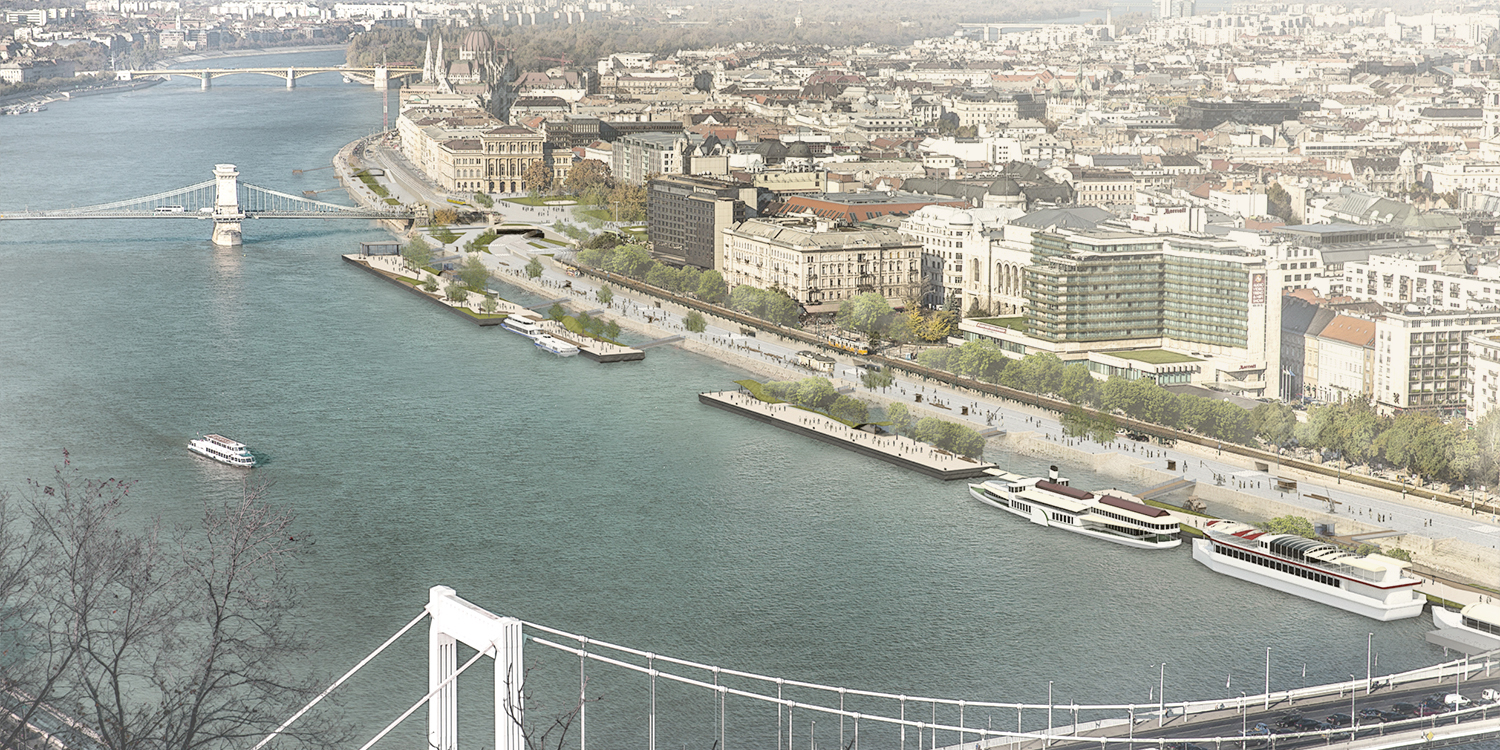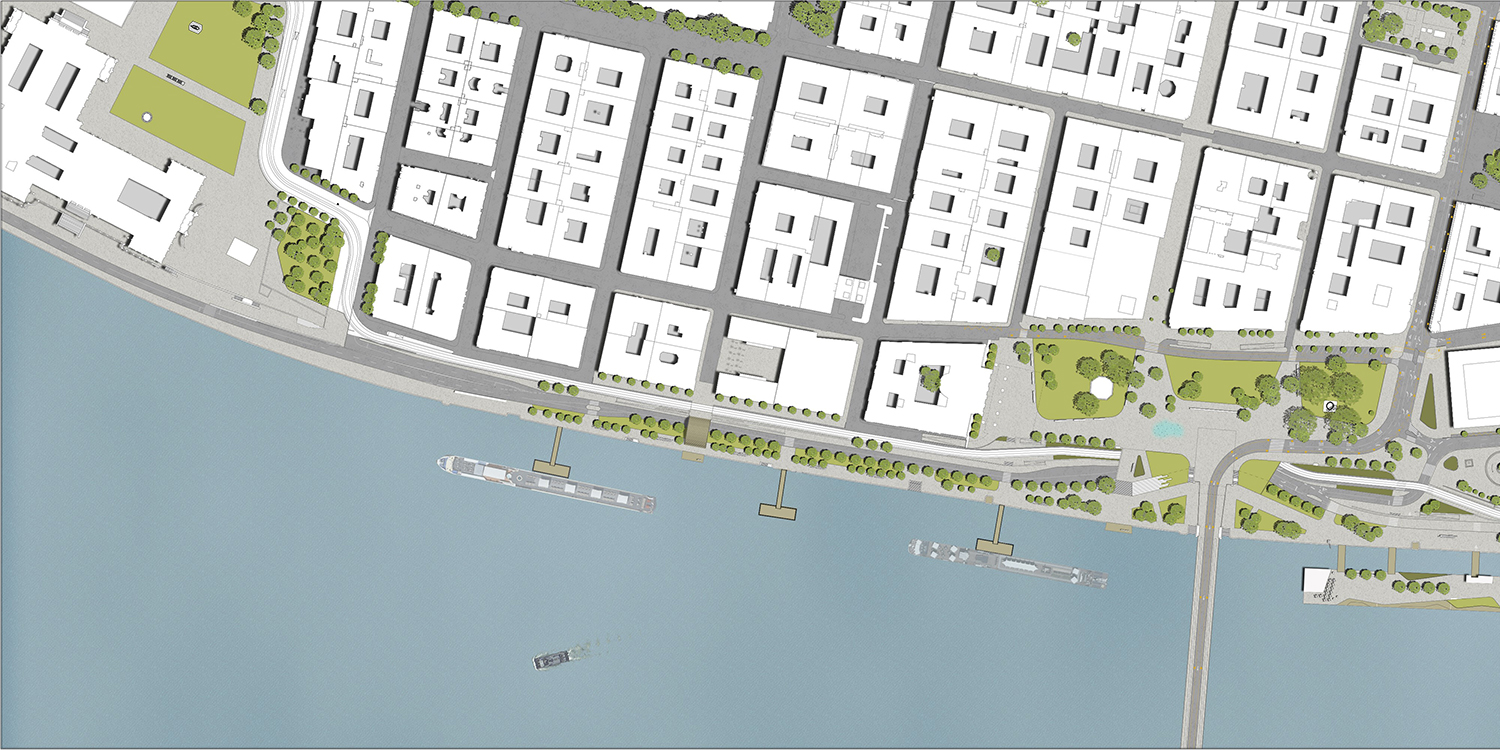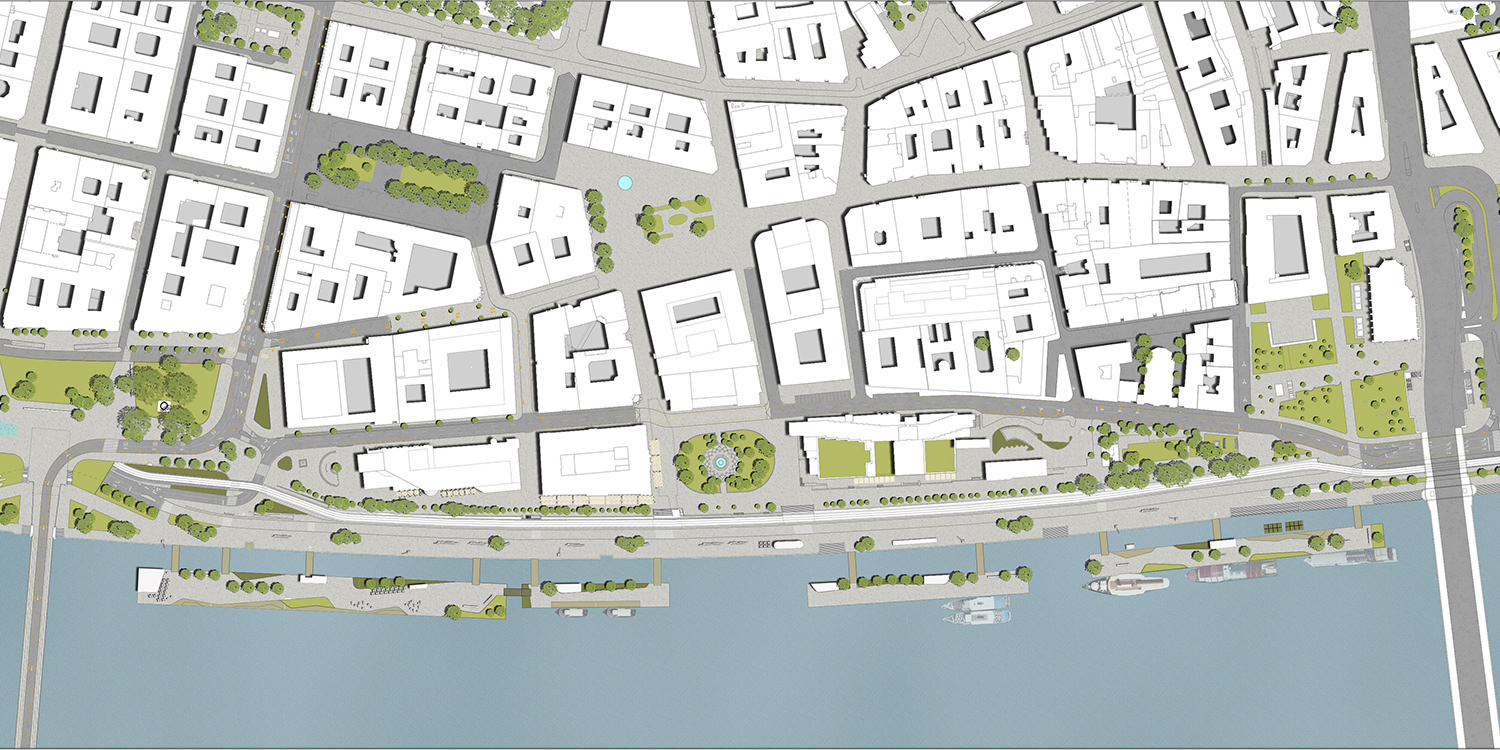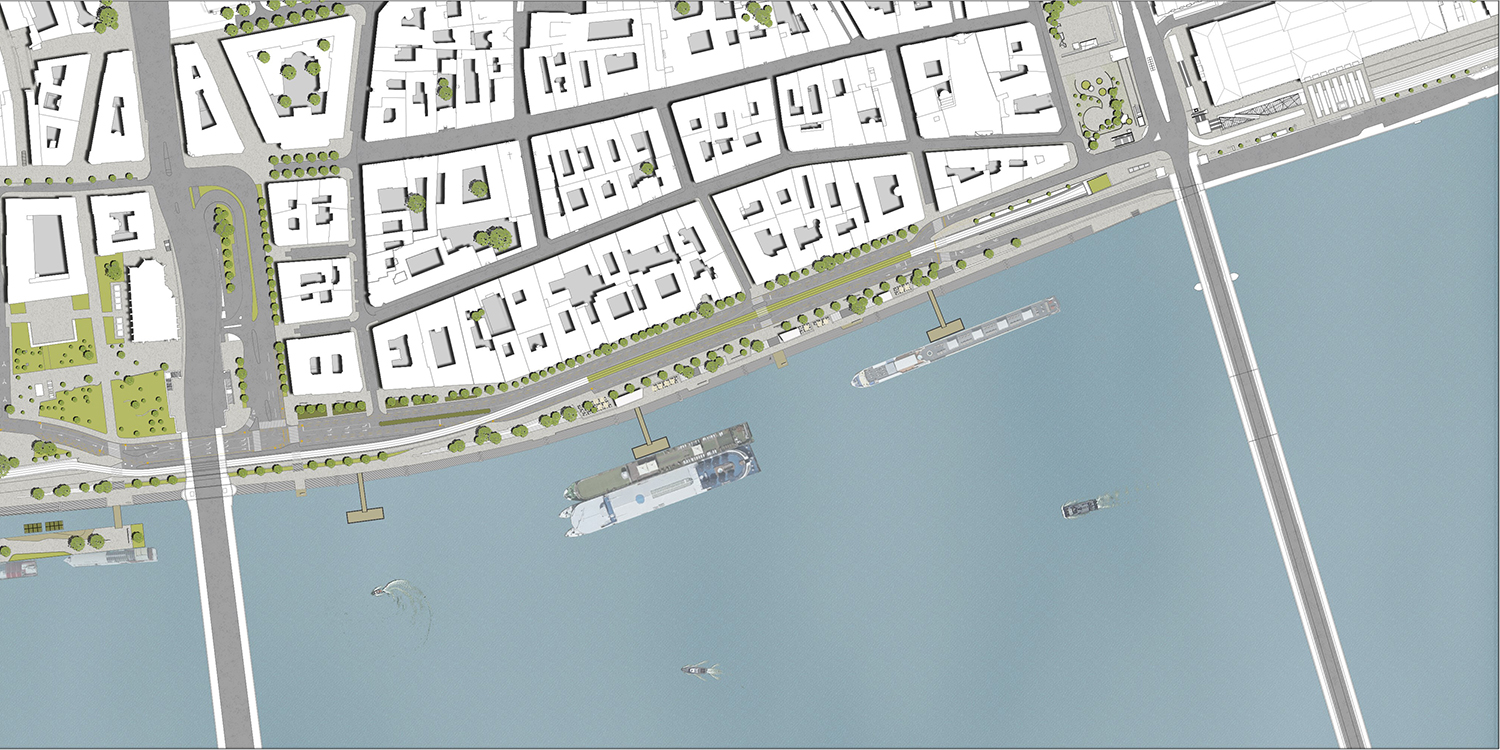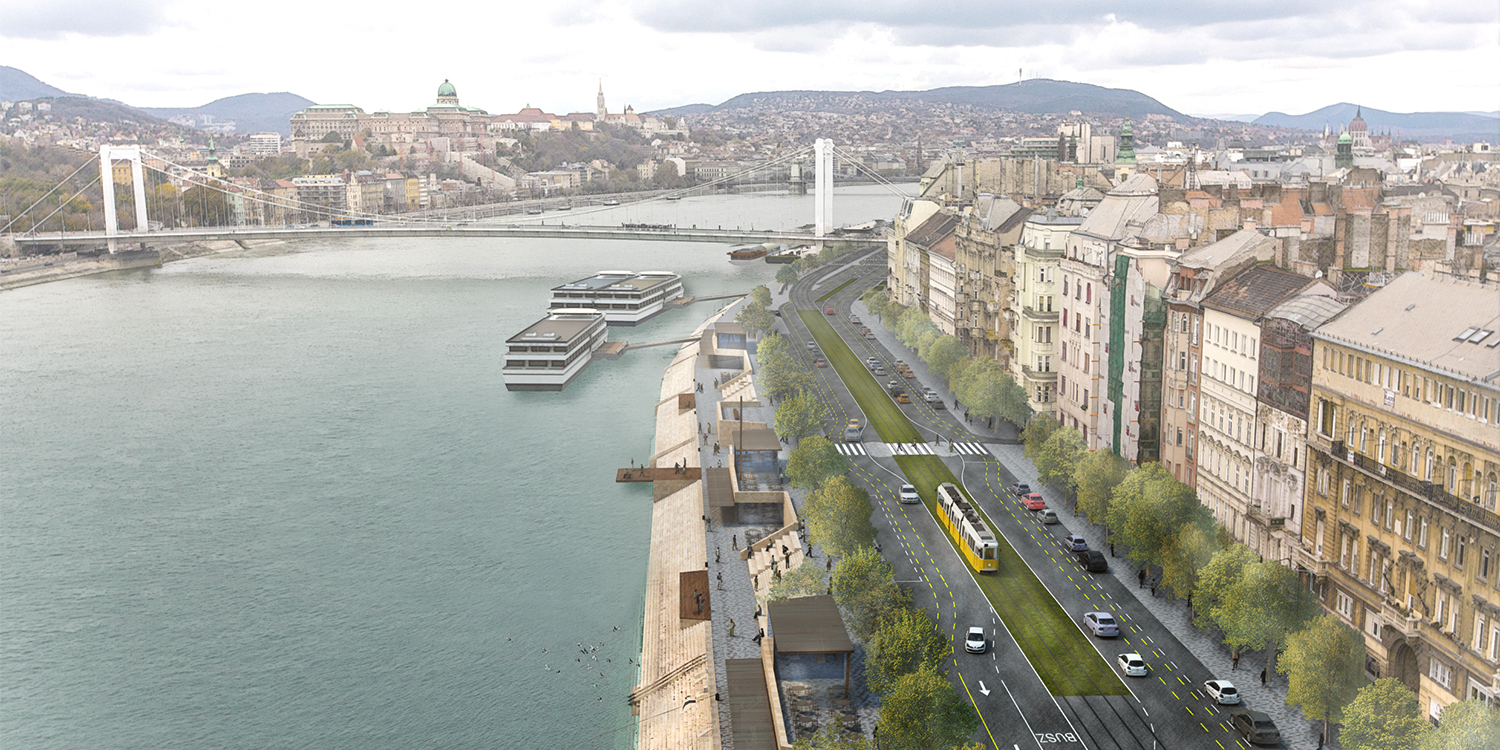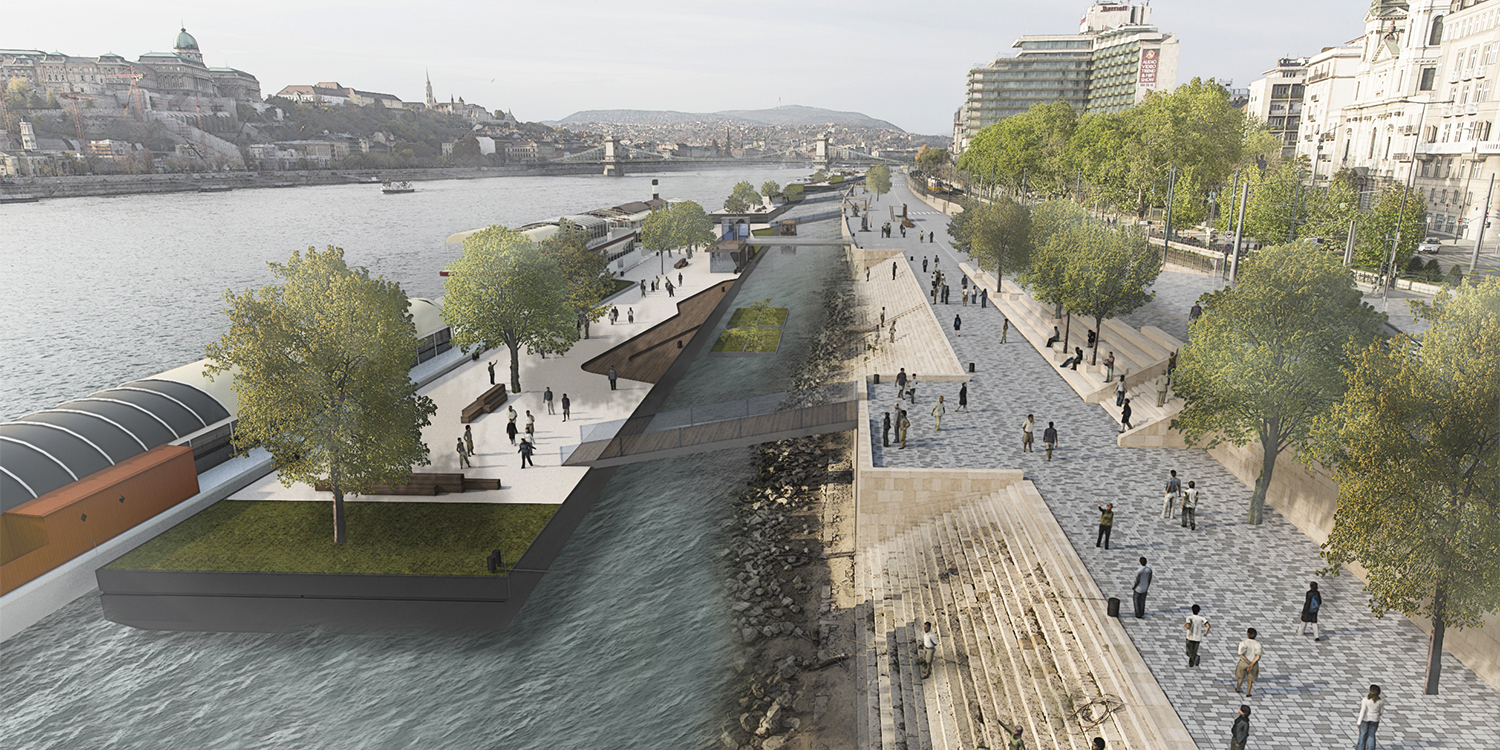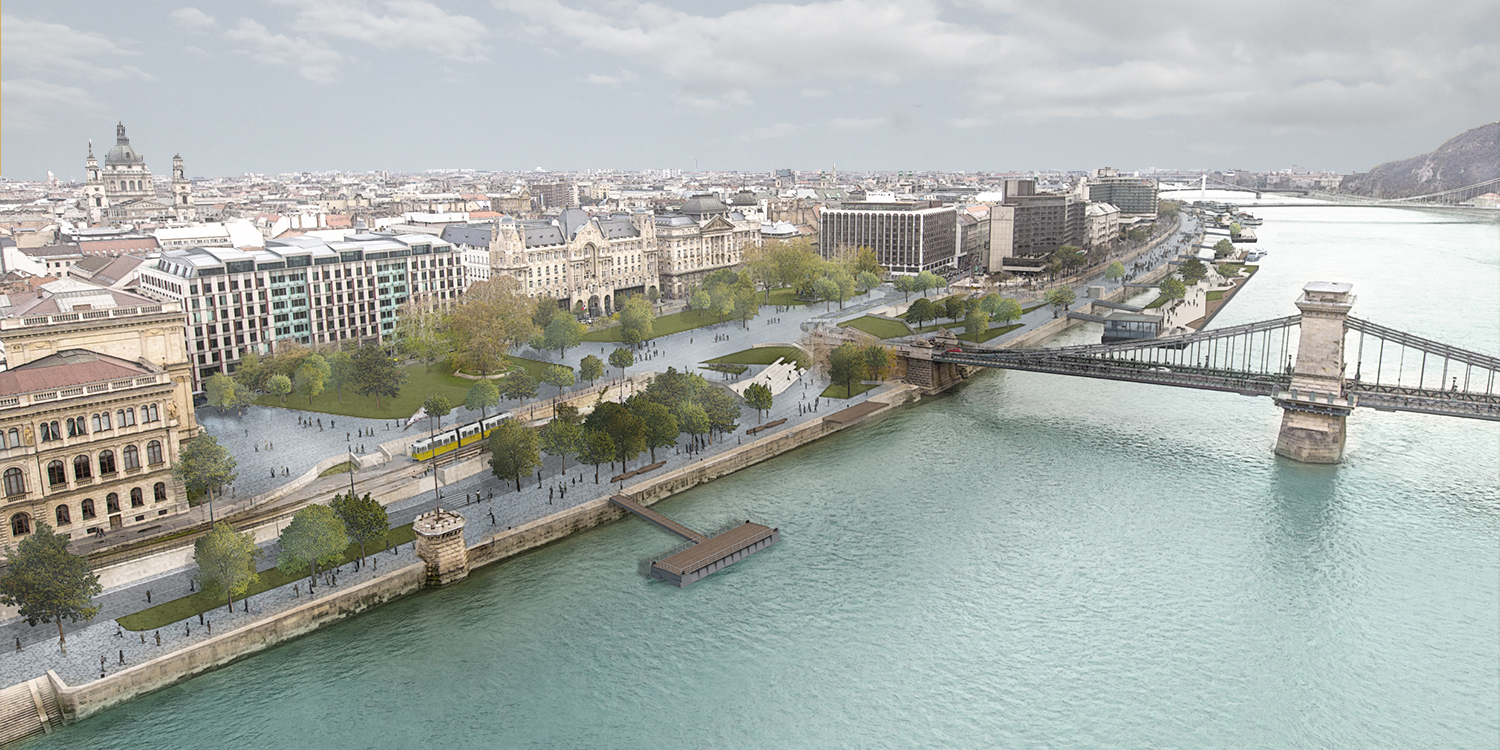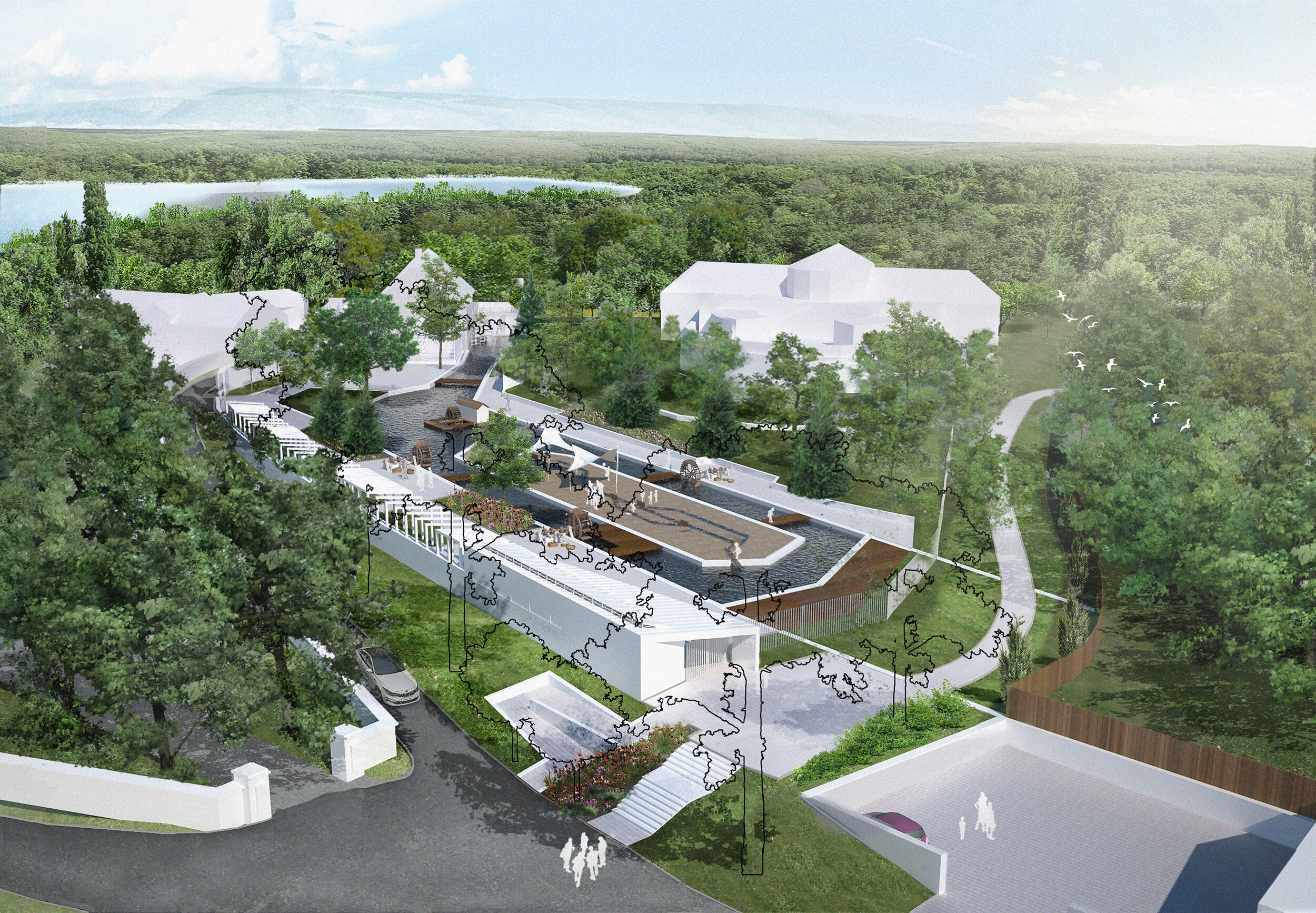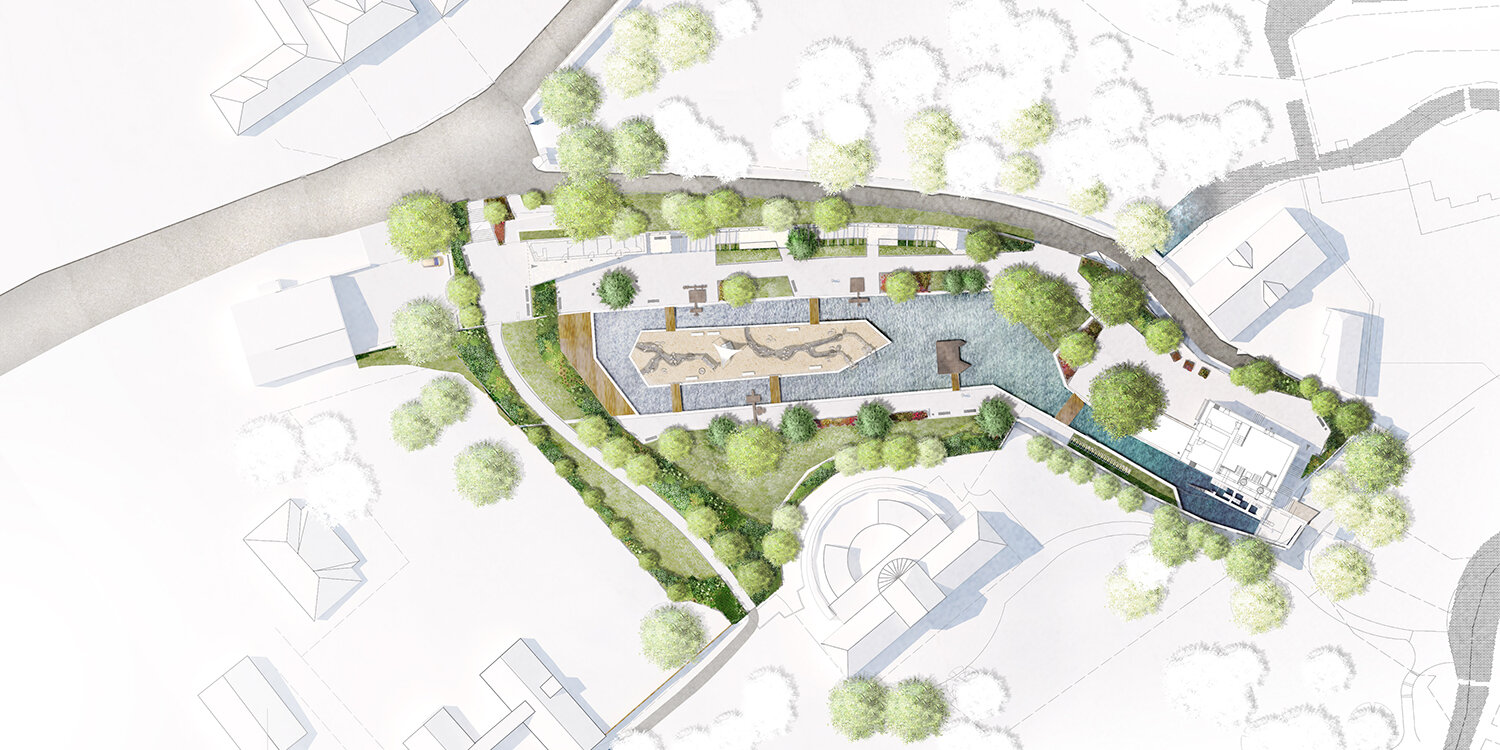The design area - a chain of spaces on the Buda side Danube waterfront – is an indispensable historical, cultural, urban and functional part of Budapest.
Besides the renewal of these separate spaces, we aim to emphasize the relevance of the relationship between the action areas (Felhévíz, Bem tér and the parks along Fő Street) as well. Our interventions include increasing the size of areas for community use and adding new features and functions. The quality renewal has been solved in a cost-effective and sustainable way, with the consideration of the area’s conservation status. The small scale, interdependent interventions were efficiently sorted together so that the project can be implemented in a feasible phasing.
Our design concept reflects today’s demands, but remains within the limits of feasibility. Particular emphasis was placed on meeting World Heritage Site criteria, creating cost-effective interventions, taking into account the constraints imposed by public utilities. The North-South traffic corridor role of Buda’s lower embankment is remains, whereas the upper embankment receives a rich network of public spaces that offers an attractive alternative for relaxation and recreation by the waterfront to both locals and tourists. It also strengthens the relationship between the water body and inner Buda.
2018-2020
Permit plan
Client: Municipality of Budapest
Lead designer: Korzó Tervezési Stúdió Kft.
Organization: Főmterv Zrt.
Hydraulic engineering: Ganz HYDRO Kft.
Gas supply: Gázláng Kft.
Utility design: KÉSZ Kft.
Road design: Mikroline Kft.
Historical research: Miklós Rácz
Electric engineering: TETRA-COM Kft.
Világörökségi HT.: Urban-lis Kft.
Visualization: VR Works Kft.
Size: 87 000 m2
